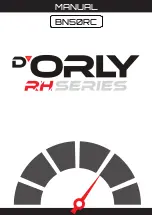
SKU 04041
For Technical Questions, Please Call 1-800-444-3353
Page 3
REV 01/04
8.
Use eye and ear protection
. Always wear ANSI approved impact safety
goggles and appropriate hearing protection. Wear a full face shield if you are
producing metal filings or wood chips. Wear an ANSI approved dust mask or
respirator when working around metal, wood, and chemical dusts and mists.
Other people in the work area must also wear ANSI approved impact safety
goggles.
9.
Maintain tools with care
. Keep tools clean for better and safer performance. Follow
instructions for lubricating and changing accessories. Inspect tool cords and air hoses
periodically and, if damaged, have them repaired by an authorized technician. The
handle must be kept clean, dry, and free from oil and grease at all times. Do not
operate a tool if any portion of the tool’s operating controls are inoperable, discon-
nected, altered or not working properly.
10.
Disconnect Air Hose and release any built-up air pressure
. Never service the
Nailer, clear jams, or disassemble with the air hose attached. Always release any
built-up air even after disconnecting hose. Disconnect the Nailer when not in use.
11.
Remove adjusting keys and wrenches
. Check that keys and adjusting wrenches
are removed from the tool or machine work surface before attaching to an air source.
12.
Avoid unintentional starting
. Be sure the trigger is in the Off position when not in
use and before plugging in. Do not carry any tool with your finger on the trigger, whether
it is attached to an air source or not. Do not point the tool towards yourself or anyone
whether it contains fasteners or not.
13.
Stay alert
. Watch what you are doing, use common sense. Do not operate any tool
when you are tired.
14.
Check for damaged parts
. Before using any tool, any part that appears damaged
should be carefully checked to determine that it will operate properly and perform its
intended function. Check for alignment and binding of moving parts; any broken parts
or mounting fixtures; and any other condition that may affect proper operation. Any
part that is damaged should be properly repaired or replaced by a qualified technician.
Do not use the tool if the trigger does not operate properly.
15.
Guard against electric shock
. Prevent body contact with grounded surfaces such
as pipes, radiators, ranges, and refrigerator enclosures.
16.
Replacement parts and accessories
. This product is to be repaired and serviced
only by a qualified technician. When this product is serviced, only identical
replacement parts should be used. Use of any other parts will void the warranty. Only
use accessories intended for use with this tool. Approved accessories are available
from Harbor Freight Tools.
17.
Do not operate tool if under the influence of alcohol or drugs
. Read warning
labels if taking prescription medicine to determine if your judgement or reflexes are
impaired while taking drugs. If there is any doubt, do not operate the tool.






























